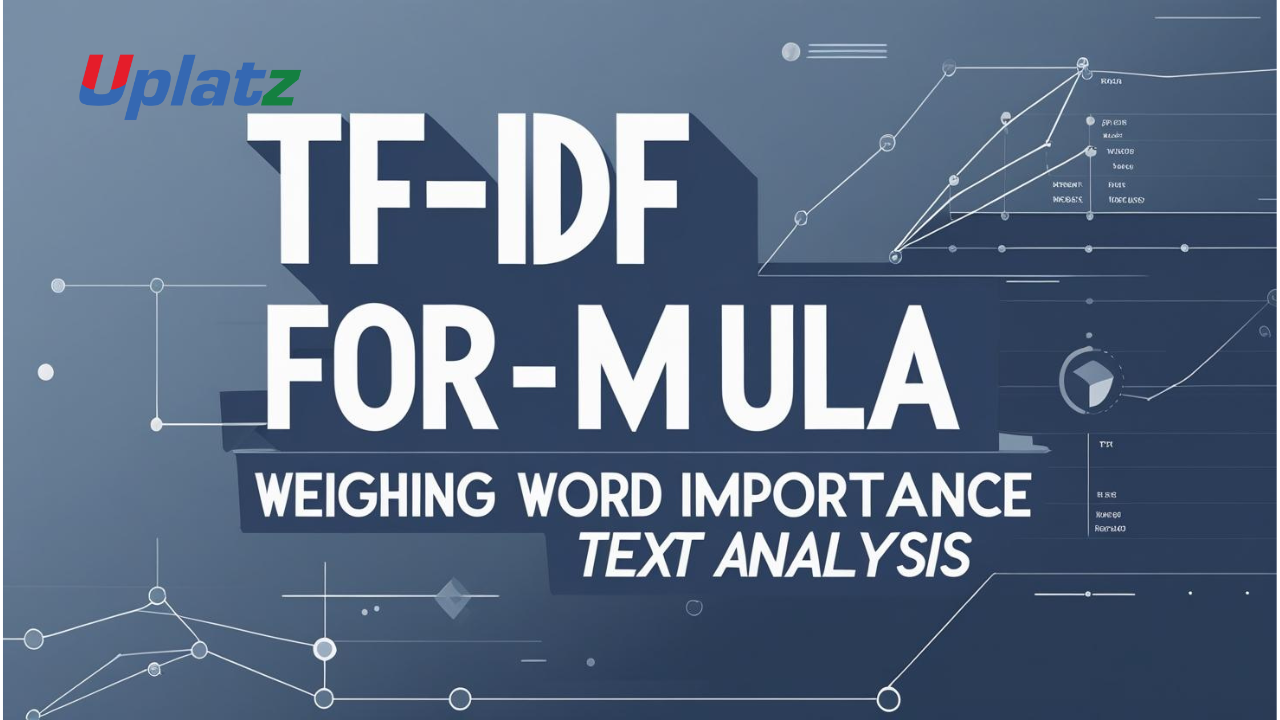 🔹 Short Description:
🔹 Short Description:
TF-IDF (Term Frequency–Inverse Document Frequency) is a statistical formula used to evaluate how important a word is to a document within a collection.
🔹 Description (Plain Text):
The TF-IDF (Term Frequency–Inverse Document Frequency) formula is a fundamental concept in natural language processing and text mining. It quantifies the relevance of a word in a specific document compared to its frequency across a collection of documents, or corpus.
Formula:
TF-IDF(word, document) = TF × IDF
Where:
- TF (Term Frequency) = (Number of times term appears in a document) / (Total number of terms in the document)
- IDF (Inverse Document Frequency) = log_e (Total number of documents / Number of documents with the term)
In essence, TF captures how often a word occurs in a document, while IDF penalizes common words that appear in many documents. The result is a weighted score indicating how important a word is in a specific context.
Example:
If the word “data” appears frequently in one document but rarely in others, its TF-IDF score will be high, suggesting it’s a key term in that document. On the other hand, words like “the” or “and” will have low scores as they appear in almost every document.
Real-World Applications:
- Search engines: Ranking pages based on query relevance
- Text classification: Identifying important features for training models
- Spam detection: Recognizing typical spam terms
- Keyword extraction: Summarizing key terms in large texts
- Recommendation systems: Suggesting content based on shared term importance
Key Insights:
- TF-IDF balances local word importance (TF) with global rarity (IDF)
- Commonly used as a feature in machine learning models for NLP
- Helps eliminate bias from stop words or overly frequent words
- Can be used for vectorizing documents for similarity and clustering tasks
- Works best with preprocessing steps like stemming, tokenization, and stopword removal
Limitations:
- Doesn’t consider word order or semantics
- Treats words independently (bag-of-words model)
- Vulnerable to synonyms or word variations
- Needs preprocessing for best results
- Fails to capture contextual meaning compared to modern embeddings
TF-IDF remains a simple yet powerful tool in the NLP toolkit, helping machines prioritize meaningful words in vast oceans of text.
🔹 Meta Title:
TF-IDF Formula – Measure Word Relevance in Text Mining
🔹 Meta Description:
Understand how the TF-IDF formula quantifies word importance across documents in natural language processing. Learn its formula, use cases, and role in search, classification, and feature extraction.
